#fairfield university
Explore tagged Tumblr posts
Text






Fairfield University Basketball
3 notes
·
View notes
Text
"Welcome to the fire - now it is your turn to hold the hose."
Billy Joel - Musician at Fairfield University (1991)
#quoteoftheday#quotes#quotesoftheday#quotes of tumblr#life quotes#inspirational#life quote#billy joel#billy joel music#here we stand#here we stand quotes#fairfield university#unique quotes
4 notes
·
View notes
Text
William Wyler: A Master Filmmaker Revisited

By Jay Rozgonyi
Associate Vice Provost for Pedagogical Innovation & Effectiveness
Director, Center for Academic Excellence
Instructor of both Educational Technology and Film Studies
How about this for a great Final Jeopardy question under the category The Oscars: “He’s the Hollywood director with the most Best Director nominations (12), the most Best Picture nominations (13), and the most acting nominations in his films (36).” Pretty good, I’d say. But chances are that the question will never be used—not because I’m not a staff writer for the show, but also because the answer would likely be considered too hard for most contestants, even serious film fans.
That they wouldn’t be able to name William Wyler is unfortunate, as he was one of the truly great filmmakers of the 20th century. A lot of his movies are well known: Wuthering Heights, Ben-Hur, Roman Holiday, Mrs. Miniver, The Best Years of Our Lives, Funny Girl… I could go on and on. But unlike Alfred Hitchcock and suspense, or John Ford and Westerns, Wyler didn’t focus on a particular genre; instead—as the list of films I just mentioned demonstrates—he moved from comedy to drama to romance to historical epic. Because of that, he was brushed aside by the critics of the 1960s and 1970s, who considered him a gifted Hollywood studio director but thought that he lacked a coherent artistic vision. In fact, Wyler’s highly diverse output was the result of a quest for innovation and a desire to challenge himself by always trying something new throughout a career that lasted nearly 50 years.
If you Google William Wyler filmmaking style, you’ll learn about the way he carefully composed his shots, staggered his actors from deep in the frame to extremely close up, and staged dialogue scenes with few cuts so all the characters are visible at the same time—all directorial techniques that demonstrate his meticulous craftsmanship. I see another element to his films, however, which hasn’t received much attention at all: a steadfast attention to social justice and basic human morality. Once you look for these themes, it’s as easy to spot as his striking camera setups and his precise use of light and shadow. Wyler’s firm sense of conscience comes out in the nuances of his stories and the characters who inhabit them, and in the subtle ways they speak to the issues of their respective days. We see it in 1937’s Dead End, where the Depression has left families broken and juveniles with little sense of hope for their future. We see it in 1946’s The Best Years of Our Lives, where GIs returning from World War II confront a home front that seems to have moved beyond them and their sacrifices, and toward a future focused on making money and assailing anyone who might be a “Commie.” And we see it in 1970’s The Liberation of L.B. Jones, Wyler’s last film and in many ways his most courageous—a brutally honest look at racism in America and the dehumanization it brings upon us all.
Over the course of 2024, Fairfield University is celebrating the career of William Wyler with an undergraduate course devoted to his work, a series of film screenings at the Fairfield Bookstore on the Post Road, and an exhibition of materials from his private collection titled William Wyler: Master Filmmaker, Man of Conscience, which will be on display at the DiMenna-Nyselius Library from September through December. We’re just a few years away from the 125th anniversary of Wyler’s birth in 1902, so this seems like a good time for a lot more people to get acquainted with the man and his films. Then, perhaps, by 2027, the Final Jeopardyanswer might even be too easy for contestants to ponder. Wouldn’t that be nice?
Fairfield University’s celebration of the life and work of William Wyler would not be possible without the generous support of his daughters, Catherine and Melanie Wyler. We thank them for all that they’ve done to enable us to share their father’s work with our community.
The following movie screenings will be open to the public at 6:30 p.m. on these dates at the Fairfield University Downtown Bookstore, located at 1499 Post Road, Fairfield, Conn.:
April 9: The Best Years of Our Lives (1946); guests: Melanie Wyler (in person) and Catherine Wyler (via Zoom).
October 1: The Desperate Hours (1955); guests: Melanie Wyler (in person) and Catherine Wyler (via Zoom); other Wyler family members may attend via Zoom.
November 19: The Liberation of L.B. Jones(1970); guests: Melanie Wyler (in person) and Catherine Wyler (via Zoom); other Wyler family members may attend via Zoom.
#Fairfield University#Jay Rozgonyi#William Wyler#The Best Years of Our Lives#The Desperate Hours#The Liberation of L.B. Jones#Wuthering Heights#Dead End#Ben-Hur#Roman Holiday#Mrs. Miniver#Funny Girl#Oscars
3 notes
·
View notes
Text











Fairfield University. Jan 30, 2023
7 notes
·
View notes
Text
Direct from the Director Late Summer 2024
We’ve had a very exciting summer at the museum! As a result of our recent AAM Museum Accreditation, this was the first summer that we had professional guards and were thus able to be open through July. Our first two summer exhibitions proved very popular with our visitors, especially Peter Anton: Just Desserts!
We welcomed 5,732 visitors to our Peter Anton and Suzanne Chamlin exhibitions in the 10 weeks between graduation and the close of the exhibitions.
We broke our one-day attendance record with over 850 visitors (serving free frozen treats at an ice cream social that day probably didn’t hurt)!
Recently we've been busy repainting the walls, planning new programs, preparing our two fall exhibitions, and installing a new group of outdoor sculpture. We can't wait to welcome you all back to campus.
The Museum is all about works on paper this fall! A pair of exhibitions will introduce you and our other visitors to a broad range of works on paper, from Old Master prints in the Bellarmine Hall Galleries to prints by contemporary BIPOC artists in the Walsh Gallery. We hope you will check out both exhibitions and all of the programs on offer.

The first exhibition, opening in the Museum’s Bellarmine Hall Galleries on September 12 and on view through December 21st, is Ink and Time: European Prints from the Wetmore Collection. Curated by Michelle DiMarzo, PhD (Assistant Professor of Art History & Visual Culture), the exhibition presents a group of woodcuts, engravings, and etchings from the late 15th through late 18th centuries, including Albrecht Dürer, Raphael, Rembrandt, and Canaletto. From familiar favorites like Dürer’s Adam and Eve and Rembrandt’s Three Trees to hidden gems like the gold-sprinkled surface of Maria Katharina Prestel’s Virtue Overcoming Vice, the show explores more than three centuries of artistic innovation on paper.

The works are part of a collection formed by Fanny S. Wetmore in the first decades of the 20th century and bequeathed to Connecticut College in 1930. This exhibition is the second in the Museum’s history to have been co-curated with Fairfield University students and has been supported by generous funding from the Samuel H. Kress Foundation.

The second exhibition, on view in the Museum’s Walsh Gallery in the Quick Center for the Arts, is Sacred Space: A Brandywine Workshop and Archives Print Exhibition. This exhibition opens on September 20th and also runs through December 21st. Sacred Space, organized by guest curator Juanita Sunday, draws on the rich history of the Brandywine Workshop and Archives, founded in Philadelphia in 1972 by artist Allan Edmunds. As of 2022, the Museum is home to a Brandywine “satellite collection” – the only such collection in Connecticut. This exhibition features works from the Museum’s own collection as well as loans from Brandywine itself.
Sacred Space encourages a deep exploration of spiritual connection, inviting viewers to reflect on the ancestral wisdom and memory passed down through generations. The exhibition serves as a portal into the interconnected realms of spirituality, time, space, memory, and culture. The artists pay homage to their forebears, drawing upon cultural traditions, rituals, and sacred practices to honor and preserve, as well as question, the invaluable heritage that shapes our identities.

In addition to the works from the Brandywine Collection, the exhibition will also feature local artists whose works are responding to the themes in Sacred Space. Artists invited by curator Juanita Sunday include Aisha Nailah, Iyaba Ibo Mandingo, Arvia Walker, and Rebecca Fowke. This exhibition is made possible by the generous support of corporate sponsor M & T Bank/Wilmington Trust.

A broad slate of programming complements both of these exhibitions, from hands-on workshops to rich public lectures, and can be explored on the museum’s website calendar at www.fairfield.edu/museum.
When you come to visit, or if you can join us for the Ink & Time festivities on September 26th, please make sure to seek out and enjoy Lauren Booth's fantastic bronze Tulip Family which has been installed on the Bellarmine Hall lawn, just below the building, on the slope heading down towards the Dolan School of Business.

Artfully yours, Carey
Captions:
Rembrandt van Rijn, Three Trees, 1643, etching, drypoint, and burin. Lent by Connecticut College.
Maria Katharina Prestel after Jacopo Ligozzi, The Triumph of Truth over Envy, 1780, etching and aquatint in brown and ochre ink, touched with gold leaf. Lent by Connecticut College.
Mikel Elam, Veil, 2019, offset lithograph, screenprint. Partial gift of the Brandywine Workshop and Archives and Museum Purchase with funds from the Black Art Fund, 2022 (2022.17.13) © Mikel Elam
James Phillips, Untitled II, 1994, offset lithograph. Partial gift of the Brandywine Workshop and Archives and Museum Purchase with funds from the Black Art Fund, 2022 (2022.17.33) © James Phillip
Ibrahim Miranda, El Túnel, 1999, offset lithograph. Lent by the Brandywine Workshop & Archives © Ibrahim Miranda
Lauren Booth, The Tulip Family: Mama Tulip, Papa Tulip and Child Tulip, 2017-2023, Bronze. On loan from the artist. © Lauren Booth
0 notes
Text

Patrick James Miller Fairfield University
Patrick James Miller photographed Dr. Emily Orlando for Fairfield University Magazine. Patrick captured portraits of Dr. Orlando to accompany an interview on her forthcoming book The Decoration of Houses, coming out this October with Syracuse University Press. Dr. Orlando employs her renowned expertise on the 20th-century writer Edith Wharton, focusing on her ever-expanding reputation as she seems “to have foreseen the excesses, obsessions, and spectacles of our current climate.”
See more of Patrick James Miller’s portrait portfolio here.
#saintlucyreps#saint lucy represents#patrick james miller#Emily Orlando#Fairfield University#Fairfield University Magazine#Edith Wharton#portrait photography#literature#people photography#academia#house of mirth#english major#editorial photography#Lily Bart
1 note
·
View note
Text

hehe Twitter meme
#myart#spyro#spyro the dragon#dwight fairfield#dead by daylight#meme#the twitter meme is to draw two of your biggest comfort characters in the steven universe meme comic panel
321 notes
·
View notes
Text
Terror Radius

Beat beat beat beat beat beat


Nothing major in Swapped lore here. Its just like a moment from a trial or something. I wanted to draw the two again :3
#dbd au#dead by daylight au#the hillbilly#max thompson jr#dbd killer#dbd fanart#alternate universe#dbd#DBDswapped#dwight fairfield#dbd dwight#dwight dbd
52 notes
·
View notes
Text

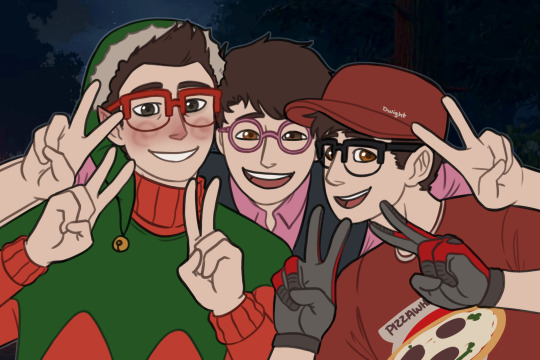

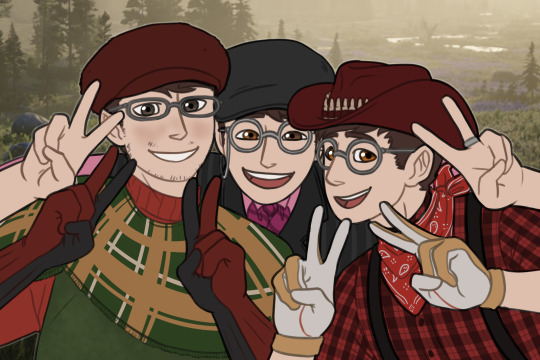

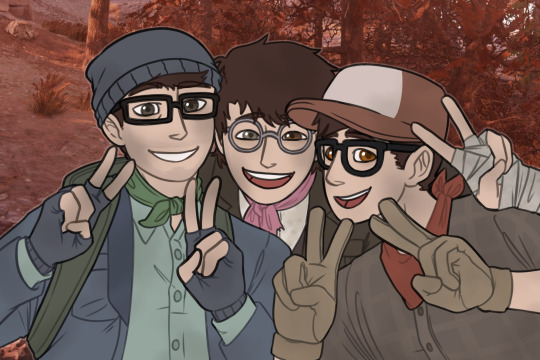


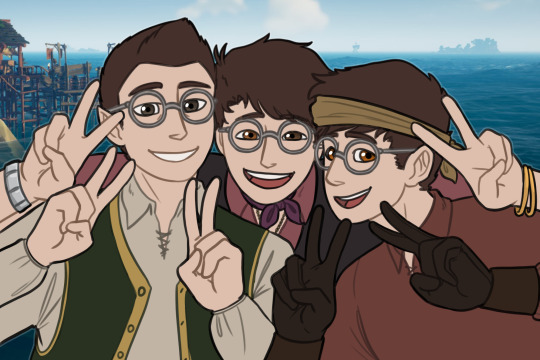

Happy 2nd Bday to the boys! 🎉
@ask-the-dweets turned two today!!! And since I have been in AU hell lately I thought I'd draw the boys in their most prominent AUs!!! This was so much work, but I did it!
OG, killer, cowboy (Red dead), Angel/Demon (GTA), post apocalypse (fallout), furry, merfolk, pirate (Sea of Thieves?), Soul Eater
#fancy dwight#elf dwight#pizza dwight#ask the dweets#dead by daylight#dwight fairfield#dbd fanart#alternate universe#art of fancy#art of pizza#art of elf#dweets au#artwork#I coulda added pokemon in their too but hhhhhh too much work already
80 notes
·
View notes
Text

I need to post more lmao. Anyway I drew my killer au version of Dwight a bit ago, and have decided to share him here. I'm absolutely obsessed with Dwight. silly guy
#dwight fairfield#dwight#dbd#dead by daylight#alternate universe#killer au#unrealistic blood#he's so silly
16 notes
·
View notes
Text
Croydon BID's latest lame stunt: a 15-foot-tall Christmas elf
Croydon BID, the business “improvement” (we use the term loosely) district people who inflicted a plague of plastic giraffes on the town centre, are now to deliver a giant-sized elf (just the one it appears) on a series of local venues. Coming to a roof top near you: try not to get too excited by Croydon BID’s latest lame wheeze No one was able to confirm whether this is the genius idea of one of…

View On WordPress
#SoEffingCroydon#Boozepark#Centrale#Croydon#Croydon BID#Croydon Town Hall#David Bowie#Elf#Fairfield Halls#Goblin#Iconic Centrale#London South Bank University#LSBU#LSBU Croydon Campus#Matthew Sims#The Elf On The Shelf#Whitgift Centre
0 notes
Text
Easter tells us to embrace the fullness of our humanity
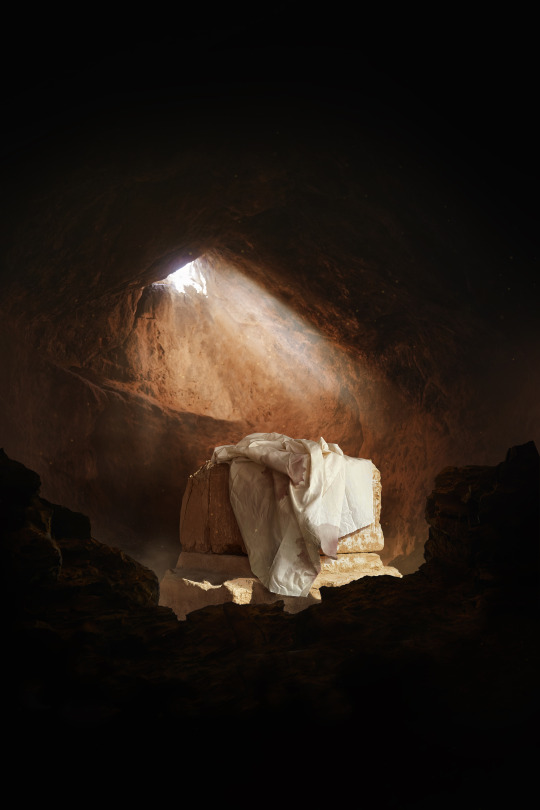
Rev. Paul K. Rourke, S.J.
Vice President for Mission and Ministry
Death, be not proud, though some have called thee
Mighty and dreadful, for thou art not so;
For those whom thou think’st thou dost overthrow
Die not, poor Death, nor yet canst thou kill me…
One short sleep past, we wake eternally
And death shall be no more; Death, thou shalt die.
-John Donne
I find comfort in these defiantly hopeful words from one of Donne’s “Holy Sonnets,” which I first read as a high school freshman. Since last Easter, death has been a persistent and menacing addition to my year. Unexpectedly, I lost my brother, John, last June. Over the last few months, I have lost a friend to a violent carjacking and two Jesuit brothers dear to me and the whole Fairfield University and Prep community: Frs. Charlie Allen, S.J., and Jim Bowler, S.J. I loved and looked up to all these men, and miss them terribly. Death has robbed and humbled me, but I no longer feel in the mood to be deferential. With Donne I feel defiant, and following his example, I say, “Death, I’ve had enough of you!” Surely, Easter is a time for all of us to join in defying death. For our Jewish brothers and sisters, too, the Passover commemorates the Lord’s deliverance of his people from death. The Angel of Death did not claim the first-born of the Chosen People or defeat the Lord’s covenant, but freed the People of Israel from bondage.
The Paschal Mystery the Church celebrates in the Easter Triduum defies death in a singular way: instead of sanitizing or ignoring it, death is confronted head-on and elevated just as it is consigned to oblivion: gory, ignominious death becomes forever the sacrament of our salvation, a reality utterly transformed and transforming. The Risen Jesus is a Wounded Jesus, but his wounds no longer define his destiny: they led to his death, but the Son of God has given them their ultimate meaning: marks of death’s ultimate powerlessness and proof that he will never abandon his humanity.
Whether or not we have tasted much death in our lives, we, too, are wounded in a world simultaneously infatuated with, and in denial of, death. If the news out of Ukraine or Israel and Gaza have not wounded us with grief, then death has wounded us even more grievously: with stony hearts. However we are wounded, Easter tells us to embrace the fullness of our humanity as Jesus did (his own and ours). The voice of Death tells us to fear our weakness and hide our wounds in shame, but Jesus reminds us that God wants to raise, transform, and glorify every part of us, not just the parts we are proud of. He wants to do the same for all of us, and we are commanded to embrace the wounded brothers and sisters all around us with sacrificial love. When we hide from their pain, or ignore their dignity, we keep our tomb closed with the stone of indifference.
When we defy death and embrace the fullness of life God offers (in ourselves and each other), Easter becomes more than another day on the calendar: it becomes the center and meaning of every day. When that happens, we can say in the same joyful confidence of Donne’s poem, “Death, thou shalt die.”
Image by Freepik
3 notes
·
View notes
Photo

The Sword of the Lord included this tiny little ad from African American pastor Thomas Thornes from Fairfield, Alabama. “Tithing: The Sure Way of Receiving Abundant Blessing” is clearly a health-and-wealth message.
Thornes pastored Galilee Baptist that split so severely they went to court!
1 note
·
View note
Text
Spring 2024 Direct from the Director
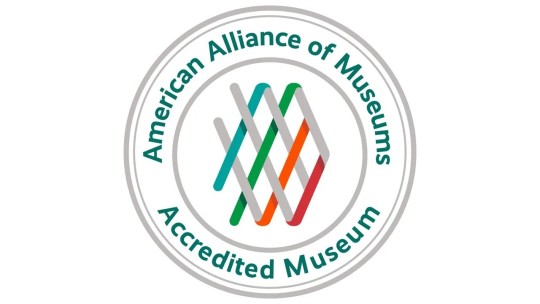
Woohoo! I am very excited to share the fantastic news that we are an accredited Museum!
The Fairfield University Art Museum has been awarded Accreditation from the American Alliance of Museums, the highest national recognition afforded to American museums. Receiving accreditation signifies excellence to the entire museum community, to government agencies and institutional funders, to collectors, partners, and visitors. This prestigious distinction will bring national recognition to our Museum for its commitment to excellence, accountability, high professional standards, and continued institutional improvement.
About the Accreditation process: Accreditation is a rigorous but highly rewarding process that examines all aspects of a museum’s operations. To earn accreditation, a museum first must conduct a year of self-study and then undergo a site visit by a team of peer reviewers. Our small-but-mighty team at the Fairfield University Art Museum worked on the self-study from May 2022 through May 2023. As part of the process, we hosted two peer reviewers on campus for a two-day site visit in November 2023. The Alliance’s Accreditation Commission, an independent and autonomous body of museum professionals, considered the self-study and visiting committee report to determine whether we should receive accreditation. We were just notified of this happy result!
Our accreditation distinguishes the Fairfield University Art Museum on the national stage:
Of the nation’s estimated 33,000 museums, just over 1,080 are currently accredited.
Fairfield University Art Museum is one of only 21 accredited museums in Connecticut and one of only 12 accredited art museums in the state.
Only 11% of museums in New England and only 16% of the academic art museums in the country are accredited.
Only 15% of the museums with staffs the size of Fairfield’s Art Museum have achieved this honor, and only one other Jesuit University has an accredited museum (the De Saisset Museum at Santa Clara University).
We are incredibly proud to be an accredited Museum and to have been recognized for all that we have accomplished since the Museum’s inception in 2010. Among the achievements we are most proud of are: having grown and diversified the permanent collection, which now numbers almost 2,700 objects; making our programs accessible to the broadest possible audiences through livestreaming, recording and archiving; keeping our exhibitions and events always completely free and open to all year after year; and making all of our exhibition materials available bilingually in Spanish. Our accreditation is a testament to the incredible generosity of our wonderful donors and supporters, who make our work possible and enable us to present programs of the highest quality for the benefit of our students, faculty, and the broader community.
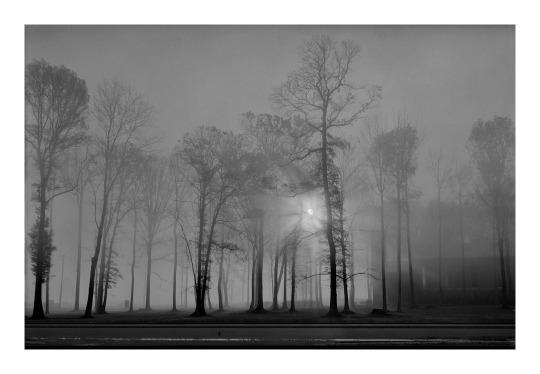
We have recently acquired a number of new works, some by donation and several via the Black Art Fund, in our continued quest to diversify our collection by purchasing works by Contemporary Black artists. This stunning photograph, entitled Sun and Trees, by Adger Cowans was included in our 2022 solo exhibition of the artist's work. We are thrilled to now be able to add it to our permanent collection, and it is making a reappearance in our Landscape in Focus exhibition opening next week.

This work by Martina Johnson-Allen was acquired, along with two others, from Brandywine Workshop and Archives to augment our Satellite Collection of works created there. It will be included in an exhibition this coming fall focusing on Brandywine prints entitled Sacred Spaces, guest curated by Juanita Sunday.
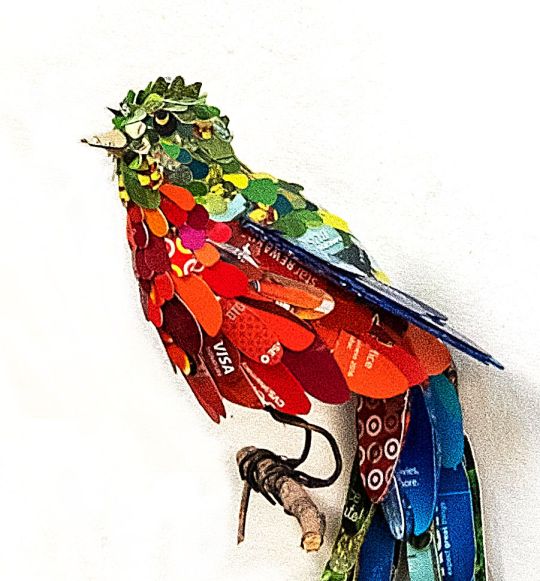
We are absolutely delighted and extremely grateful that the Quetzal that is included in Streaming: Sculpture by Christy Rupp, the current exhibition in the Museum's Walsh Gallery, has been donated by the artist to the Museum's permanent collection. You have just one month left to see this fantastic exhibition - do not miss it!
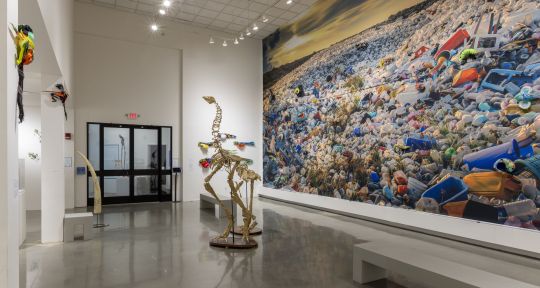
I look forward to seeing you in the galleries this spring for Christy Rupp (followed by Peter Anton: Just Desserts), Suzanne Chamlin: Studies in Color, and our Focus on Landscape photography exhibition.
Artfully yours, Carey Carey Mack Weber Frank and Clara Meditz Executive Director
Captions: Adger Cowans, Sun and Trees, 1959, archival pigment print. Museum Purchase with funds from the Black Art Fund, 2024 Martina Johnson-Allen, Another Realm, 2006, offset lithograph. Partial gift of the Brandywine Workshop and Archives and Museum Purchase with funds from the Black Art Fund, 2024 Christy Rupp, Quetzal, 2020, credit cards, wood, steel, mixed media. Gift of the artist. Christy Rupp, Streaming: Sculpture by Christy Rupp, Gallery Installation shot, Walsh Gallery, February 2024
0 notes
Text
Annie & I Take Altamont!
The first time I saw the small town of Altamont, Illinois was this past June at the John Deere G reunion. I was taken with the lovely mansion I saw there. We also loved the fun antique shop the hubby and I stopped at. I saw that they were having a music and wine fair at the Charles Wright House Museum. I thought perfect! A trip for Annie! About once a month or so, my friend Annie Jansen and I…
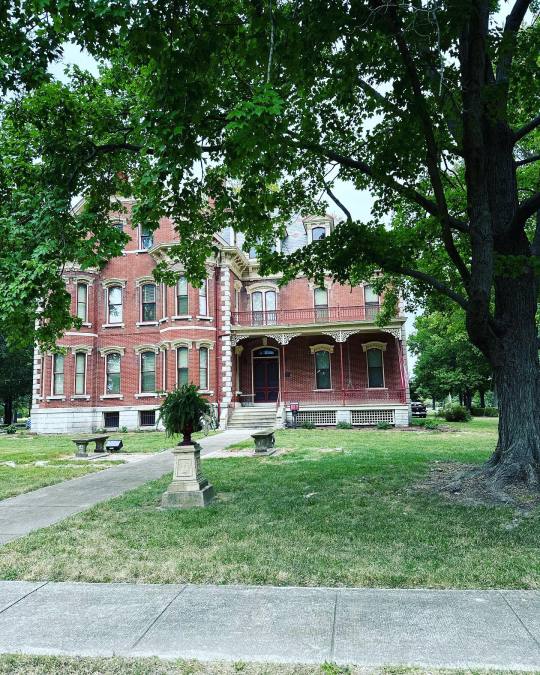
View On WordPress
#Altamont Illinois#Alwerdt Artworks Sculpture park#Alwerdt&039;s Gardens#Annie Jansen#antique shop#art#Charles Wrigght House Museum#Cookie Jar Bakery#doctor#Dr. Charles M. Wright Beer Wine and Music Fundraiser#Drew Sheafor#Fairfield Iowa#food#jewelry#John Deere G reunion#Kull Furniture#lawyer#Maharishi International University#Maharishi Vedic observatory#nature#Nik Alwerdt#Open Door Diner#pottery#Pyramid Sculpture Park#Salem Illinois#sculptures#Second Empire architecture#self-sufficient home#Sigel#small town
1 note
·
View note
Text
part 1 | part 2 | part 3 | part 4
Content Warnings: tiny whump, faerie whump, injury, recovery, rescue/caretaking perceived as capture by whumpee
---
To his credit, the human seems to feel awful about unknowingly using Shae as a washcloth. He is more attentive than ever, giving Shae all the food, water, medicine and warmth he could possibly want, his hands extra careful when handling the injured faerie. The man apologizes often, and though he isn't overly affectionate, he rubs his thumb in little circles on Shae's back when Shae is scared and wipes his tears away when he cries.
Still, Shae does not speak to him and never looks him in the eye. He came close to feeling safe before, and all it got him was banged up and nearly drowned. Whatever the human's intentions, he is dangerous.
Shae heals more with each passing day, and gets more used to the human's routines and presence. The man spends most of the daylight hours out in the shed, except when he stops in to grab lunch or a drink and check on Shae. Every so often he will load some of his work into his truck and leave for the day; Shae eventually learns that he sells things at local markets, a human tradition he has only heard stories about.
When he's home, the man seems pretty ordinary. He eats, sleeps, bathes, cleans. Sometimes he talks quietly to himself or has music on in the background; other evenings he will bring a project into the living room to paint while watching TV. Too curious to resist, Shae will peek out from his box and watch. The human notices, but doesn't say anything.
One evening the man is scrolling through the channels when the sound of tires on gravel outside makes both he and Shae perk up and look over. Shae can't see a thing from here, but the human seems to recognize whatever it is. He sets the remote down and gets up to go to the door.
On the TV, a late night talk show has just resumed from its break. The host announces a guest - a man from a show called Fairfield Faerie Hunters. Shae isn't paying full attention until he hears that, his head whipping back over to see a man waving to the audience, shaking the host's hand, sitting on the couch. Two others emerge from backstage carrying something large and rectangular covered in a sheet, which they set down and then promptly leave.
The two begin speaking and Shae listens in horror as his fears are confirmed - the guest's job is capturing and selling faeries, and it seems that other humans watch him do this as entertainment. It shouldn't surprise him...Shae has seen more than his share of human cruelty. But something about this, in particular, makes his stomach churn.
"And of course, all our traps are 100% humane, and - yes, thank you," he pauses while the audience claps and cheers at the declaration, "and we inspect every client we sell to, to make sure they are following all the ethical guidelines regarding faerie care. You know, zoos, universities, faerie gardens...places where these rare, precious creatures are given all the best care."
When the applause fades, the host asks, "and I believe you've brought one of those rare, precious creatures here for us to see today?"
"That's right!" He leans forward and pulls the sheet away. The audience gasps.
Beneath the sheet is a large terrarium, lush with plants and flowers and a little pond. To one side is a little hut made of sticks. The camera moves in close and pans across it, showing all the details. At first it appears empty...then a faerie steps out from inside the hut.
"Now of course his actual home is much more spacious than this...we call this his mobile home, and as you can see, it is a pretty faithful recreation of its natural environment..." The man opens door at the top of the container and reaches a hand inside; the faerie obediently goes to him and allows itself to be lifted and held up to the camera. It seems healthy enough, but there is a distance in its eyes that gives Shae chills.
"If he seems a little tired, that isn't jet lag," the man continues, giving the faerie's cheek a little rub. "We give them a mild sedative - totally safe - before public appearances like this. Helps settle their nerves. Did you know that heart failure is the third most common cause of faerie deaths?"
"Okay, well now I have to ask, what are the first two?"
"Number two is animal attack, of course, they have so many natural predators out there. And number one, I'm sad to say, is human activity. You have poaching, pollution, habitat loss, you know, getting hit by cars and lawnmowers, things like that." The audience makes a sympathetic sound and the man nods in agreement.
"And about how much would a client pay for one? Let's say him."
"Why, are you interested?" The audience laughs. "Well, we don't like to talk numbers, this is really all about finding clients who meet our standards...but I'd say - this one is young, healthy, and very docile - he'd go for upwards of 800k?"
The host gives an exaggerated whistle. "So do you have Black Friday deals, or...?" As the audience laughs again, the host turns to the camera. "When we come back, our guest will share the dark secrets of the faerie secondhand market..."
At some point, the woodworker returned to the living room and sat on the couch again, but Shae was too fixated on the TV to notice. He startles when the man leans forward and takes in Shae's stricken expression.
"Are you...no, you're not okay." the human quickly grabs the remote and changes the channel. "No more of that." He reaches over and pets Shae's hair a few times and frowns when he feels Shae trembling. "You're safe here, okay? I'm not going to sell you, if that's what you're thinking."
It was one option, Shae thinks dejectedly. The human might be telling the truth; he might not sell Shae, but that does not mean Shae will like whatever he has in mind. He stays quiet, allowing the man to comfort him a little longer. Then he pretends to go to sleep, but stays up for hours, planning his escape.
#yeah that's right lads he's gonna try again#tiny whump#faerie whump#injury#recovery#caretaking#rescue#captivity#whump writing#my writing#my ocs#shae
40 notes
·
View notes